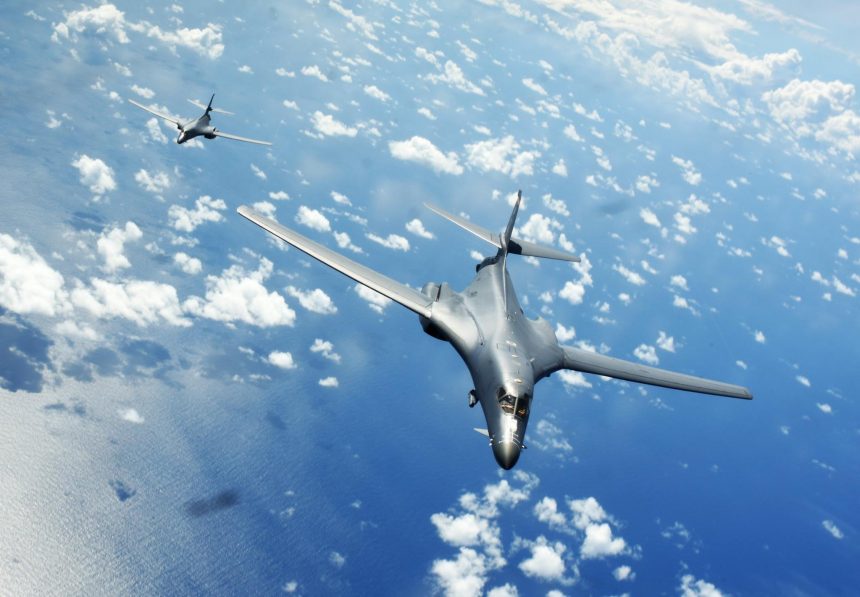Air Force and Navy assets train in South China Sea.
On Jun. 8, two U.S. Air Force B-1B Lancers assigned to the 9th Expeditionary Bomb Squadron, deployed from Dyess Air Force Base, Texas, flew a 10-hour mission from Andersen Air Force Base, Guam, through the South China Sea, and operated with the U.S. Navy’s Arleigh Burke-class guided-missile destroyer USS Sterett (DDG 104) “to increase interoperability by refining joint tactics, techniques and procedures while simultaneously strengthening their ability to seamlessly integrate their operations.”
The B-1B Lancers (“Bones” in accordance with the nickname used by their aircrews) have been supporting he U.S. Pacific Command’s (USPACOM) Continuous Bomber Presence mission since Aug. 6, 2016, when the first B-1s, belonging to the 28th Bomb Wing from Ellsworth Air Force Base, South Dakota, deployed to Guam, for the first time in a decade, to replace the B-52s.
The B-1B had been taken out from the Continuous Bomber Presence (CBP) rotation at Guam’s Andersen Air Force Base because they can’t carry any kind of nuclear weapon: the Lancer deployment in the regions brings a conventional heavy bomber within striking distance of the Korean peninsula.
While deterring North Korea out of Guam, the B-1s have also been involved in several regional exercises. For instance, in November 2016, one Lancer carried out close air support training in the vicinity of Australia, a type of mission in which they cooperate with JTACs.
CAS are among the most frequent missions flown by the “Bones” against ISIS during their 6-month deployment in support of Operation Inherent Resolve last year: when they returned stateside in January 2016, the B-1s had flown 490 sorties dropping 3,800 munitions on 3,700 targets.









